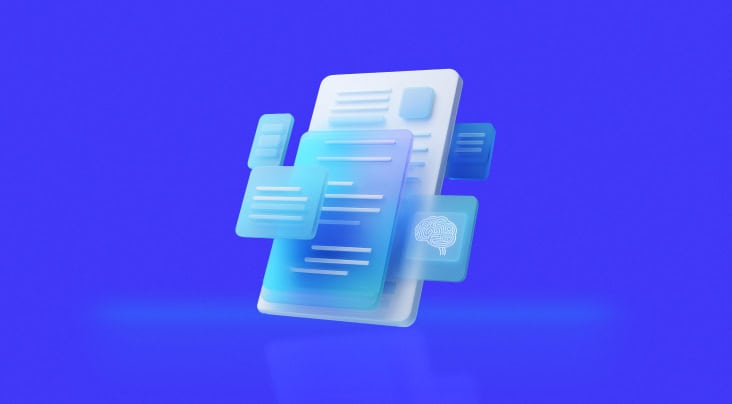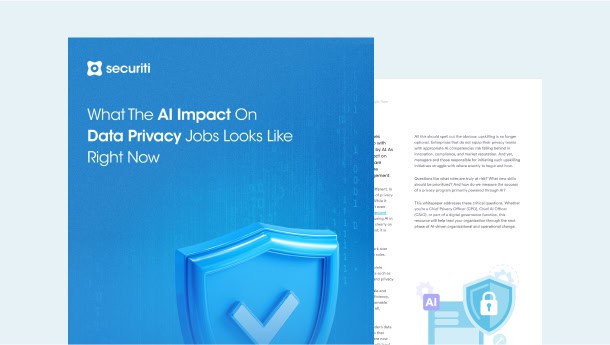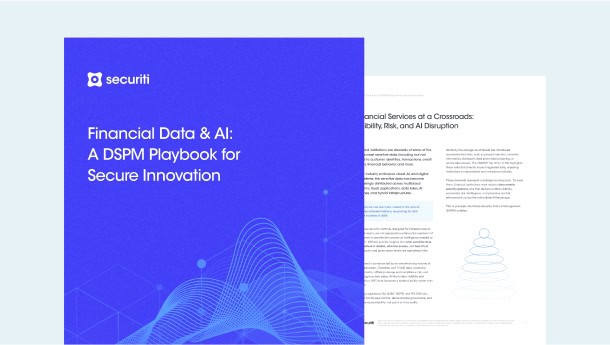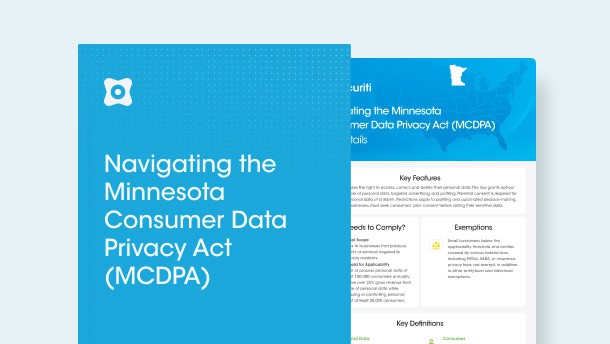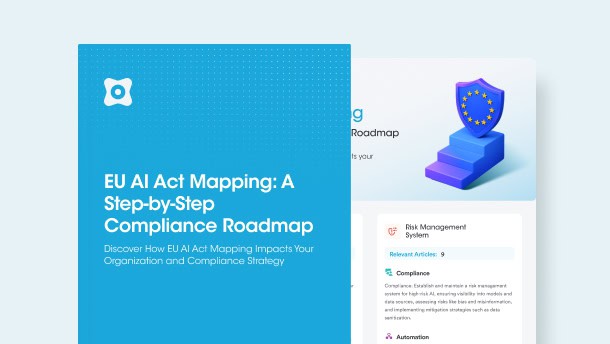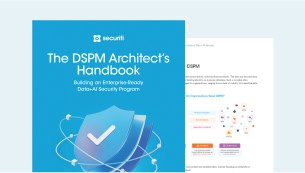Modern organizations have understood the necessity and urgency of integrating AI within their operations to leverage the benefits such an arrangement offers: unprecedented opportunities for innovation, efficiency through extensive data analysis, and, above all, the possibility of creating a truly personalized user experience for all individual customers. However, as the technology evolves at breakneck speed, organizations also face several complex challenges related to data security and governance that fuel this entire arrangement.
Traditional data security measures are both reactive and inadequate for addressing the modern risks associated with AI-driven data infrastructure, which organizations are increasingly deploying.
Microsoft’s 2024 Data Security Index Report states that security-related issues in AI applications doubled from 27% in 2023 to over 40% in 2024, highlighting the critical importance of integrated data security frameworks designed to adapt to AI's complexity.
In such a context, data security posture management (DSPM) has repeatedly emerged as the premier choice by organizations looking to fortify their data security.
Read on to learn more about DSPM, its necessity in the AI age, best practices for implementing it within your organizational infrastructure, and, most importantly, which solution to choose for your DSPM needs.
Understanding DSPM: A Modern Approach to Data Security
DSPM is a highly proactive and integrated approach to solidifying an organization’s data security framework. Most traditional data security methodologies focus more on perimeter defences and an overall reactive approach. In contrast, DSPM relies on a combination of meticulous automation, continuous monitoring, and real-time visibility into the data to discover, classify, and manage them across the collective organizational data systems. Through this approach, organizations can detect and address potential loopholes and vulnerabilities before they can result in serious incidents.
As a result, DSPM covers multi-cloud environments, hybrid infrastructures, and extensive ecosystems, leveraging AI workflows and applications. Modern organizations have swathes of data that are both voluminous and are consistently being transferred to and accessed across diverse platforms. With DSPM, they gain real-time, comprehensive visibility into these data flows, allowing for almost instantaneous identification of sensitive assets and application of policies as deemed necessary by the organization.
Thanks to this centralized and automated control over data security and compliance mechanisms, DSPM greatly reduces an organization's overall risk exposure, minimizes manual efforts, and significantly boosts operational efficiency. All of these make it both a reliable and critical necessity for businesses in the modern business landscape that is becoming increasingly AI-dependent and driven.
3 Key Components
I. Data Discovery & Classification
Data discovery and classification are the foundational elements of DSPM as they enable the systematic identification, categorization, and cataloguing of sensitive data assets. This is done via a comprehensive scan of all the data repositories across the organization’s cloud and on-premises environments to locate the data assets. These data assets are then categorized based on their sensitivity or any other labeling schema deemed necessary by an organization or regulatory obligations, such as by jurisdiction or based on which third parties have access to them. With such insights, organizations can maintain a resourceful inventory of their entire data infrastructure, enabling risk assessments to be carried out with the appropriate context.
This aspect of DSPM is arguably the most important as it gives an organization the necessary insights about its data resources, such as where its sensitive data is stored, who has access to it, how it is being used or shared, the data protection mechanisms in place, and all modifications made to it since its collection.
II. Risk Assessment & Policy Enforcement
With DSPM, organizations gain the vital capability of continuous risk assessments and automated policy enforcement, elevating their overall security posture. Data flows and usage patterns can be monitored in real time for all potential risks, with all the anomalies being identified instantly. These can include any form of unauthorized access, misuse, or exposure that would put the organization’s data assets at risk. Through the dynamic application of policy enforcement, all identified threats can be mitigated swiftly via a predefined set of automated interventions.
Policy enforcement through DSPM provides an unparalleled degree of flexibility and granular control where customized rules can be created based on each organization’s unique business needs, regulatory requirements, or overall threat profile. Automating their application and enforcement reduces the response time for incidents, minimizes the likelihood of human error, and leads to an overall strengthening of an organization’s data governance framework.
III. Integration with Security Frameworks
Through seamless integration with existing security frameworks, DSPM ensures an organization can effectively continue to leverage its prior cybersecurity investments and implement a comprehensive and coherent security management framework across the enterprise’s data architecture. These can range from cloud services to endpoint protection.
Furthermore, by integrating DSPM into an organization’s broader security architecture, they can derive greater benefits from capabilities including enhanced threat detection capabilities, unified security intelligence, and streamlined incident response. These, in turn, lead to a significant improvement in the organization’s operational efficiency via a cohesive framework that emboldens their ability to respond to any and all data security threats proactively.
Top 3 Benefits Of DSPM Implementation
Some major benefits of DSPM implementation include the following:
I. Enhanced Data Visibility
DSPM enables an incomparable degree of visibility into an organization’s vast and complex datasets that are critically important for AI applications. Most AI models rely heavily upon such datasets as they ingest, process, and generate extensive amounts of outputs based on processing such data. With DSPM, organizations can systematically discover, classify, and monitor whether sensitive data is being fed into such models. Such visibility allows an organization to gain valuable insights related to the flow of data and how it’s used within AI workflows, which in turn can be leveraged for better data governance decisions and risk management measures.
Lastly, this enhanced visibility allows for proactive and swift detection of any unauthorized access to sensitive data. With organizations consistently looking to scale their AI capabilities, DSPM must be an essential framework for maintaining appropriate control and oversight over their data assets throughout the AI lifecycle.
II. Risk Mitigation
AI systems pose several unique security and privacy risks for organizations, such as prompt injection attacks, unauthorized use of GenAI, and inadvertent exposure of sensitive data. DSPM’s continuous monitoring of all AI interactions, including inputs, outputs, and data-sharing processes, ensures all potential vulnerabilities are proactively identified and mitigated before any major incident occurs.
Such an approach minimizes the likelihood of data breaches distinctly associated with AI applications, ensuring organizations remain compliant with the strict regulatory requirements and other standards, while also positioning them well to enforce security policies tailored to AI-specific threats.
III. Operational Efficiency
DSPM provides a comprehensive uptick in the operational efficiency within an organization’s AI processes by automating critical data security mechanisms, particularly those in AI environments. These include continuous data discovery, real-time classification, and compliance monitoring, which not only reduce the manual effort required and the subsequent human error but also ensure the consistent application of security policies across the complex data+AI workflows.
By integrating DSPM into these workflows, organizations can significantly reduce the response time to potential incidents and streamline their regulatory compliance efforts. As a result, organizations can devote more time and resources to achieving innovation and agility in their AI initiatives without compromising on their data security standards.
Related: Top 5 Benefits of DSPM
Best Practices in DSPM Implementation
Some best practices that should accompany any DSPM implementation within organizations include the following:
Assessment & Planning
As with any new framework being deployed within an organization, a comprehensive initial assessment and planning phase is necessary for effective DSPM implementation. In this initial phase, organizations must perform a thorough evaluation of their current data security posture. Doing so identifies the gaps, vulnerabilities, and most importantly, the opportunities for improvement. Such an assessment should include mapping out and classifying the organization’s data resources based on their sensitivity. Then, such assets must be matched against their relevant regulatory compliance requirements as well as the specific risks associated with them in the context of AI integrations.
Once such an assessment has been completed, it can move on to developing and implementing a roadmap that outlines the priorities, timelines, and resource allocations related to DSPM deployment across the firm. This is important in ensuring the DSPM implementation aligns with organizational goals while also setting measurable performance metrics and objectives for future evaluations.
Critical Integrations
Organizations must devote a significant degree of diligence to ensure the DSPM solution can be seamlessly integrated with their existing security infrastructure, as doing so is critical in achieving comprehensive data protection. To that end, integration with core secure technologies, solutions, and frameworks such as SIEM (Security Information and Event Management), SOAR (Security Orchestration, Automation, and Response), cloud security platforms, and identity and access management (IAM) systems must be at the center of the DSPM deployment. These integrations allow for a coordinated and cohesive management of all identified data risks, solidify threat detection capabilities, and allow for a unified response within an organization in case of an event.
Furthermore, these integrations must extend beyond the aforementioned technical tools and solutions and should be embedded effectively within the organization’s processes and workflows, especially those involving AI. Doing so not only ensures consistent policy enforcement across the various departments but ultimately amplifies the overall value being driven from the DSPM implementation.
Continuous Monitoring
Continuous monitoring is arguably the most valuable capability offered by DSPM as it enables real-time visibility into the entire data security posture. With such insights, organizations can detect, analyze, and eliminate all data-related threats, policy violations, and any other identified anomalies instantly across all data environments, applications, and integrations. Furthermore, with AI-driven analytics, these monitoring capabilities can be elevated to include complete response plans that come into effect as soon as an event occurs, ensuring timely responses for more effective remediation.
Moreover, continuous monitoring allows for a more dynamic and informed decision-making process in refining security policies, optimizing current threat response procedures, and ensuring the security posture remains compliant with the necessary regulatory requirements.
Regular Training & Awareness
Human errors will always be a fatal blind spot for organizations when it comes to security. Unlike digital processes and tools, human errors can be difficult to detect until it's too late. Hence, regular training and awareness programs are the best options available for organizations to mitigate this threat as much as possible. Ensuring that all relevant staff understand the DSPM principles, the relevant data-management protocols, security best practices, and other mechanisms deployed to reduce internal risks is vital in shoring up the weakest link in an organization’s data security infrastructure.
The training sessions can and should include resources highlighting the importance of data classification, secure data usage, and incident reporting procedures. These become even more important in AI environments where data interactions are becoming increasingly complex. Such sessions and programs must be conducted at regular intervals and updated to reflect both the latest threats and regulatory compliance obligations. Furthermore, real-life case studies and interactive learning methods should be leveraged to give the employees a realistic experience of what to do and what not to do.
Related: DSPM Checklist 2025: Essential Steps for Effective Data Security Posture Management
How Securiti Can Help
Securiti is a global leader in providing data+AI privacy, security, governance, and compliance solutions that are relied on by some of the world's leading enterprises.
Among its plethora of modules are the sensitive data intelligence, which enables organizations to discover, classify and label all sensitive data elements in multicloud and self-managed structured and unstructured data systems at a petabyte scale, data lineage which helps teams gain granular insights into the changes and transformations the data goes through during its entire lifecycle, and data access intelligence and governance which provide real-time details into user access settings around data systems and the data within these systems, which helps in the identification of potential liabilities and the enforcement of high-level policies that prevent unauthorized access.
Securiti’s Data Security Posture Management (DSPM) is a comprehensive solution that provides holistic insights into the security posture of any organization’s data assets and automatically remediates misconfigurations, ensuring that your sensitive data stays protected at all times.
Request a demo today and learn more about Securiti’s DSPM and associated modules that can be extremely vital for your organization’s data security needs, particularly in an AI context.

